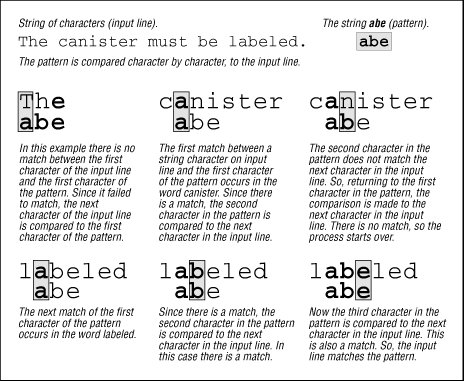26.3 Understanding Expressions
You are probably familiar with the kinds of expressions that a calculator interprets. Look at the following arithmetic expression:
2 + 4
"Two plus four" consists of several constants or
literal values and an operator.
A calculator program must
recognize, for instance, that 2 is a numeric constant and
that the plus sign represents an operator, not to
be interpreted as the
+
character.
An expression tells the computer how to produce a result. Although it is the sum of "two plus four" that we really want, we don't simply tell the computer to return a six. We instruct the computer to evaluate the expression and return a value.
An expression can be more complicated than 2+4; in fact, it might consist of multiple simple expressions, such as the following:
2 + 3 * 4
A calculator normally evaluates an expression from left to right. However, certain operators have precedence over others: that is, they will be performed first. Thus, the above expression will evaluate to 14 and not 20 because multiplication takes precedence over addition. Precedence can be overridden by placing the simple expression in parentheses. Thus, (2+3)*4 or "the sum of two plus three times four" will evaluate to 20. The parentheses are symbols that instruct the calculator to change the order in which the expression is evaluated.
A regular expression, by contrast, is descriptive of a pattern or sequence of characters. Concatenation is the basic operation implied in every regular expression. That is, a pattern matches adjacent characters. Look at the following example of a regular expression:
ABE
Each literal character is a regular expression that
matches only that single character.
This expression describes an "
A
followed by a
B
then followed by an
E
"
or simply the string
ABE
.
The term "string" means each character concatenated to the one
preceding it.
That a regular expression describes a
sequence
of characters
can't be emphasized enough.
(Novice users are inclined to think
in higher-level units such as words, and not individual characters.)
Regular expressions are case-sensitive;
A
does not match
a
.
Programs such as
grep
(
27.2
)
that accept regular expressions
must first evaluate
the syntax of the regular expression to produce a pattern.
They then read the input line by line trying to match the pattern.
An input line is a string, and to see if a string matches the pattern,
a program compares the first character in the string to the first
character of the pattern.
If there is a match, it compares the second character in
the string to the second character of the pattern.
Whenever it fails to make a match, it compares the next character
in the string to the first character of the pattern.
Figure 26.1
illustrates this process, trying to match the pattern
abe
on an input line.
Figure 26.1: Interpreting a Regular Expression

A regular expression is not limited to literal characters.
There is, for
instance, a metacharacter - the dot (
.
) - that can be used as a
"wildcard" to match any single character.
You can think of this wildcard as analogous to a blank tile
in Scrabble(TM) where it means any letter.
Thus, we can specify the regular expression
A.E
and it will
match
ACE
,
ABE
, and
ALE
.
It will match any character
in the position following
A
.
The metacharacter
*
(the asterisk) is used to match zero or more
occurrences of the
preceding
regular expression, which typically
is a single character.
You may be familiar with
*
as a
shell
metacharacter, where it also means "zero or more characters."
But that meaning
is very different from
*
in a regular expression.
By itself, the
metacharacter
*
does not match anything in a regular expression;
it modifies what goes before it.
The regular expression
.*
matches any number of
characters.
The regular expression
A.*E
matches any string that matches
A.E
but it will also
match any number of characters between
A
and
E
:
AIRPLANE
,
A
FINE
,
AE
,
A
32-cent
S.A.S.E
,
or
A
LONG
WAY
HOME
, for example.
If you understand the difference between
.
and
*
in regular
expressions, you already know about the two basic types of metacharacters: those
that can be evaluated to a single character, and those that modify how
characters that precede it are evaluated.
It should also be apparent that by use of metacharacters you can expand or limit the possible matches. You have more control over what is matched and what is not. In article 26.4 , Bruce Barnett explains in detail how to use regular expression metacharacters.
- from O'Reilly & Associates' sed & awk





